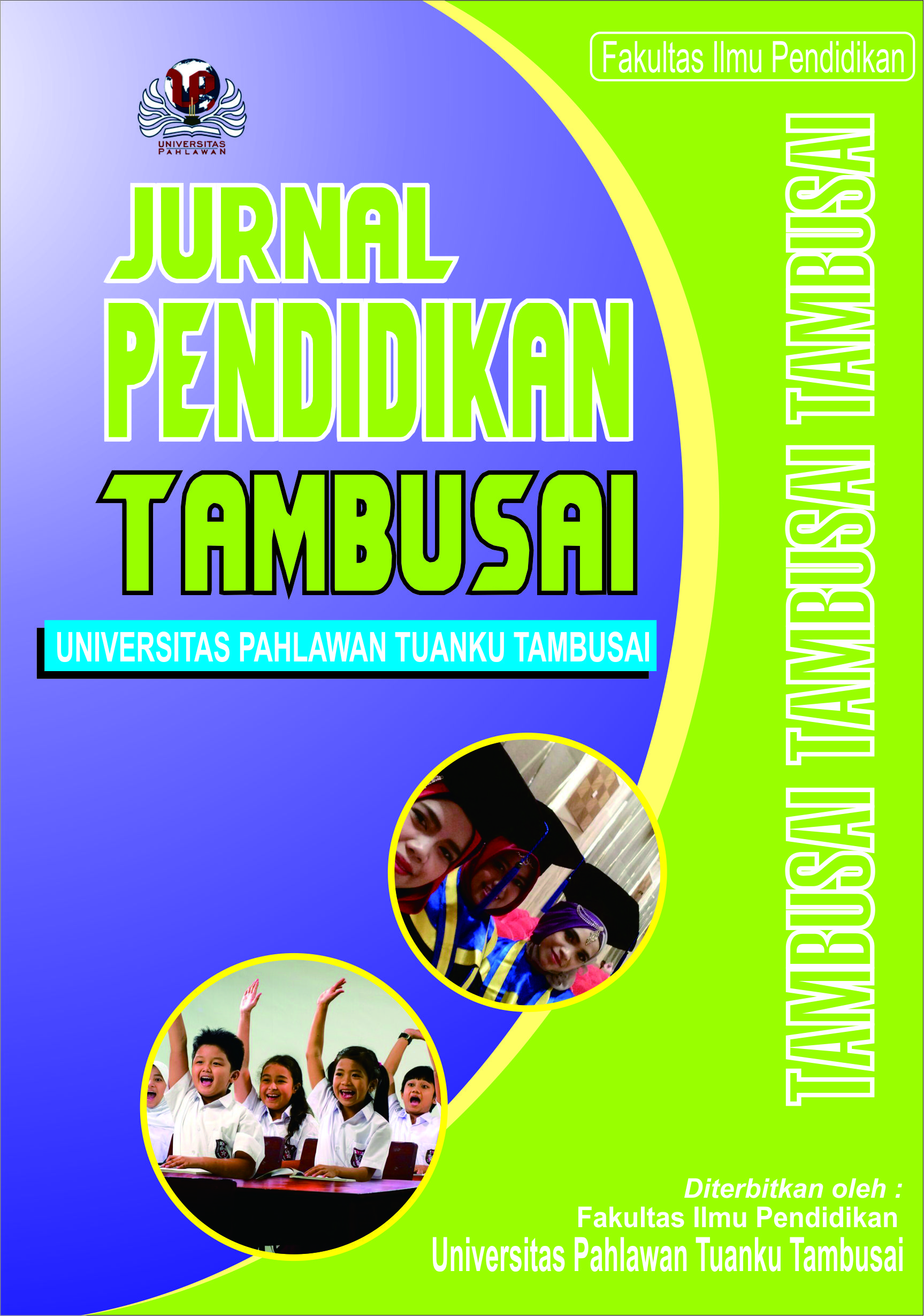Pengaruh Supporting Electrolyte Terhadap Deteksi Ion Logam Pb2+ Menggunakan Pencil Lead Electrode Termodifikasi Lapisan Tipis Perak dengan Metode Voltametri Siklik
DOI:
https://doi.org/10.31004/jptam.v8i2.14938Keywords:
Pb2+, Pencil Lead Electrode, Lapisan Tipis Perak, Supporting Electrolyte, Voltametri SiklikAbstract
Ion logam Pb2+ merupakan kontaminan yang berbahaya bagi lingkungan dan kesehatan. Penelitian ini bertujuan unutk mempelajari respon elektrokimia dari PLE dan Ag/PLE untuk mendeteksi ion logam Pb2+ dan menentukan kondisi optimum supporting electrolyte untuk pengukuran ion Pb2+. Pada penelitian ini digunakan teknik elekrokimia untuk mendeteksi ion logam Pb2+. Elektroda dimodifikasi dengan lapisan tipis perak secara elektrodeposisi dengan metode voltametri siklik. Hasil penelitian menunjukkan Ag/PLE memberikan respon yang lebih baik dibandingkan PLE dalam mendeteksi ion Pb2+ dengan HNO3 0,1 M sebagai supporting electrolyte yang optimum.
References
Angizi, S., Hong, L., Huang, X., Selvaganapathy, P. R., & Kruse, P. (2023). Graphene versus concentrated aqueous electrolytes: the role of the electrochemical double layer in determining the screening length of an electrolyte. Npj 2D Materials and Applications, 7(1). https://doi.org/10.1038/s41699-023-00431-y
Annu, Sharma, S., Jain, R., & Raja, A. N. (2020). Review—Pencil Graphite Electrode: An Emerging Sensing Material. Journal of The Electrochemical Society, 167(3), 037501. https://doi.org/10.1149/2.0012003jes
Anugrah Putri, Y., Kumala Sari, T., Oktavia, B., & Kalmar Nizar, U. (2021). Pengaruh Supporting Electrolyte Pada Penentuan Formaldehida Secara Voltammetri Siklik Menggunakan Pencil Lead Electrode (PLE) Modifikasi Lapisan Tipis Perak. Chemistry Journal of Universitas Negeri Padang, 10(1). http://ejournal.unp.ac.id/index.php/kimia
Arce-Castro, J., Vilasó-Cadre, J. E., Benítez-Fernández, D., Rodríguez-de la Rosa, H., & Arada-Pérez, M. A. (2022). Effect of supporting electrolytes on voltammetry with manual staircase voltage scan. The Journal of Engineering and Exact Sciences, 8(3), 14235–01e. https://doi.org/10.18540/jcecvl8iss3pp14235-01e
Asadian, E., Iraji Zad, A., & Shahrokhian, S. (2016). Voltammetric studies of Azathioprine on the surface of graphite electrode modified with graphene nanosheets decorated with Ag nanoparticles. Materials Science and Engineering C, 58, 1098–1104. https://doi.org/10.1016/j.msec.2015.09.022
David, I. G., Popa, D. E., & Buleandra, M. (2017). Pencil graphite electrodes: A versatile tool in electroanalysis. In Journal of Analytical Methods in Chemistry (Vol. 2017). Hindawi Limited. https://doi.org/10.1155/2017/1905968
Dickinson, E. J. F., Limon-Petersen, J. G., Rees, N. V., & Compton, R. G. (2009). How much supporting electrolyte is required to make a cyclic voltammetry experiment quantitatively “diffusional”? A theoretical and experimental investigation. Journal of Physical Chemistry C, 113(25), 11157–11171. https://doi.org/10.1021/jp901628h
Honeychurch, K. (2019). Trace voltammetric determination of lead at a recycled battery carbon rod electrode. Sensors (Switzerland), 19(4). https://doi.org/10.3390/s19040770
Kumala Sari, T., Riga, R., & Zubir, M. (2021). Pencil Lead Electrode Modified with Gold Thin Layer for Voltammetric Detection of Chromium(VI). Eksakta, 22, 145–153. http://www.eksakta.ppj.unp.ac.id/index.php/eksakta
Oje, A. I., Ogwu, A. A., Mirzaeian, M., Oje, A. M., & Tsendzughul, N. (2019). Silver thin film electrodes for supercapacitor application. Applied Surface Science, 488, 142–150. https://doi.org/10.1016/j.apsusc.2019.05.101
Palisoc, S., Gonzales, A. J., Pardilla, A., Racines, L., & Natividad, M. (2019). Electrochemical detection of lead and cadmium in UHT-processed milk using bismuth nanoparticles/Nafion®-modified pencil graphite electrode. Sensing and Bio-Sensing Research, 23. https://doi.org/10.1016/j.sbsr.2019.100268
Palisoc, S., Lee, E. T., Natividad, M., & Racines, L. (2018). Silver nanoparticle modified graphene paste electrode for the electrochemical detection of lead, cadmium and copper. International Journal of Electrochemical Science, 13(9), 8854–8866. https://doi.org/10.20964/2018.09.03
Phal, S., Nguyen, H., Berisha, A., & Tesfalidet, S. (2021). In situ Bi/Carboxyphenyl-Modified Glassy Carbon Electrode as a Sensor Platform for Detection of Cd2+ dan Pb2+ using Square Wave Anodic Stripping Voltametry. Sensing and Biosensing Research. https://doi.org/10.1016/j.sbsr.2021.100455
Pinate, S., Ispas, A., Leisner, P., & Zanella, C. (2021). Electrocodeposition of Ni composites and surface treatment of SiC nano-particles. Surface and Coatings Technology, 406. https://doi.org/10.1016/j.surfcoat.2020.126663
Pura, J. L., Salvo-Comino, C., García-Cabezón, C., & Rodríguez-Méndez, M. L. (2023). Concurrent study of the electrochemical response and the surface alterations of silver nanowire modified electrodes by means of EC-AFM. The role of electrode/nanomaterial interaction. Surfaces and Interfaces, 38. https://doi.org/10.1016/j.surfin.2023.102792
Safavi, A., Maleki, N., & Farjami, E. (2009). Electrodeposited silver nanoparticles on carbon ionic liquid electrode for electrocatalytic sensing of hydrogen peroxide. Electroanalysis, 21(13), 1533–1538. https://doi.org/10.1002/elan.200804577
Sarvestani, M. R. J., Madrakian, T., & Afkhami, A. (2023). Simultaneous electrochemical determination of Pb2+ and Cd2+ ions in food samples by a silver nanoparticle-COF composite modified glassy carbon electrode. Journal of Food Measurement and Characterization, 3505–3514. https://doi.org/0.1007/s11694-023-01880-1
Downloads
Published
How to Cite
Issue
Section
Citation Check
License
Copyright (c) 2024 Radha Afifah, Trisna Kumala Sari

This work is licensed under a Creative Commons Attribution-ShareAlike 4.0 International License.
Authors who publish with this journal agree to the following terms:
- Authors retain copyright and grant the journal right of first publication with the work simultaneously licensed under a Creative Commons Attribution License that allows others to share the work with an acknowledgement of the work’s authorship and initial publication in this journal.
- Authors are able to enter into separate, additional contractual arrangements for the non-exclusive distribution of the journal’s published version of the work (e.g., post it to an institutional repository or publish it in a book), with an acknowledgement of its initial publication in this journal.
- Authors are permitted and encouraged to post their work online (e.g., in institutional repositories or on their website) prior to and during the submission process, as it can lead to productive exchanges, as well as earlier and greater citation of published work (See The Effect of Open Access).



